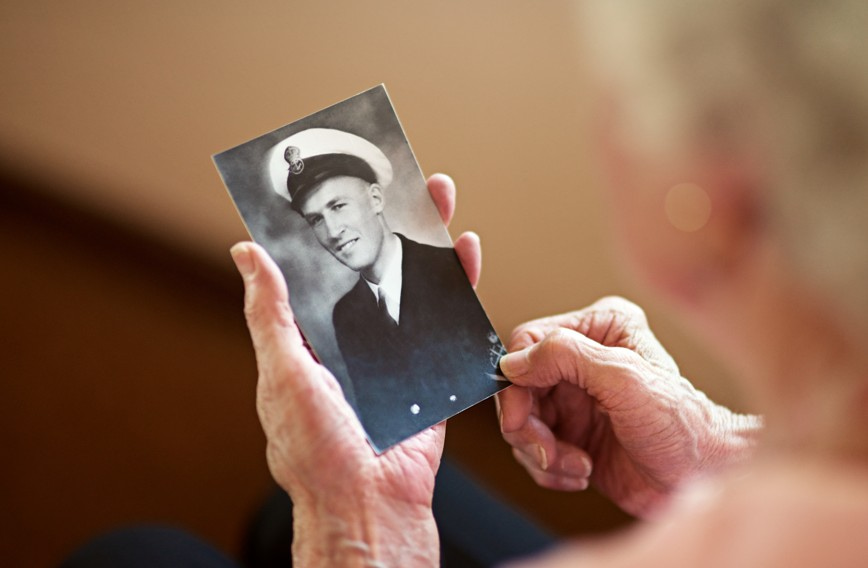Finding the Right Memory Care: What Families Need to Know
When memory loss or dementia progresses, families often reach a critical moment: how do we provide the right care — without losing who our loved one is?
Memory care isn’t just about safety. It’s about creating a daily life that still includes purpose, connection, and comfort — even as cognitive changes advance.
And the right environment makes a measurable difference.
✅ A study in The Journal of Post-Acute and Long-Term Care Medicine found that older adults with dementia living in specialized memory care communities experienced:
- 75% higher emotional well-being
- 60% greater daily engagement
- Fewer hospitalizations due to confusion or falls
What drives these outcomes? Tailored environments where staff are trained in dementia-specific care, spaces reduce anxiety, and routines are designed to support both structure and individuality.
What families should look for:
- ✔️ Specialized team training in dementia behaviors and communication
- ✔️ Personalized care plans that adapt as the disease progresses
- ✔️ Familiar, calming spaces that reduce disorientation
- ✔️ Daily routines that include meaningful activities, not just “busy time”
- ✔️ Emotional connection — staff who know residents beyond their diagnosis
Choosing memory care is not about giving up. It’s about choosing a place where your loved one can feel safe, valued, and truly cared for — day after day.
This guide will help you focus on what truly matters — so you can move forward with clarity, and choose care that honors both their needs and their humanity.

Step 1: Understand What True Memory Care Means in a Senior Living Community
When families begin searching for “what is memory care?” the answers often sound vague or oversimplified. But here’s what you really need to know:
Memory care is a specialized approach to supporting people living with Alzheimer’s or other forms of dementia. It goes far beyond safety — it’s about preserving dignity, identity, and daily quality of life through personalized environments and staff trained in cognitive care.
Common Questions Families Ask
How is memory care different from traditional senior care?
Memory care is not just an extension of assisted living — it’s a highly specialized model designed around the cognitive, emotional, and behavioral needs of people living with dementia.
The National Institute on Aging defines memory care as a setting that combines 24-hour supervision, structured routines, and specially trained staff to reduce confusion and improve quality of life. Unlike general senior care, memory care includes:
- Staff trained in redirection, sensory validation, and non-verbal communication.
- Environments designed to minimize overstimulation and wandering.
- Programming built around cognitive engagement, personal interests, and life history.
In short, memory care isn’t about limiting independence — it’s about supporting it differently, with tools adapted to the evolving needs of the mind.
Is memory care worth the investment?
According to a 2023 review published in The Journal of Post-Acute and Long-Term Care Medicine, individuals in memory care settings experience fewer hospitalizations, greater emotional stability, and higher engagement in daily life than those receiving care at home or in non-specialized settings.
The Alzheimer’s Association also highlights that professional memory care significantly reduces caregiver stress and the risk of caregiver burnout — a factor that affects over 11 million unpaid caregivers in the U.S. alone, contributing to an estimated $346 billion in uncompensated labor each year.
In terms of outcomes, communities that deliver consistent, evidence-based memory care often help delay cognitive decline, reduce the use of psychotropic medications, and increase the likelihood of social interaction — all markers of a higher quality of life, even in advanced stages of dementia.
How can I tell if a memory care program is actually working?
This is one of the most important — and most overlooked — questions. And while every journey is different, here are evidence-based indicators that care is making a positive impact:
- Residents are consistently engaged in meaningful activities — not simply occupying time, but participating with interest and agency.
- Behavioral symptoms are minimized through non-pharmacological interventions like music, aromatherapy, or guided movement. (A study in Frontiers in Psychology found that music therapy alone can reduce agitation by over 60% in people with Alzheimer’s.)
- Staff can speak specifically about the resident’s personal history, triggers, and soothing strategies — a sign they are seen as people, not patients.
- Care plans are updated frequently and involve input from family. According to the Alzheimer’s Society, plans that are reviewed at least quarterly lead to better outcomes and fewer crisis interventions.

Key elements of high-quality memory care:
- Ongoing dementia-specific training
This should be part of the culture, not a one-time workshop. Programs like music therapy or reminiscence therapy can greatly improve communication and emotional stability. - Therapeutic environments
Spaces should include visual cues, natural light, calming layouts, and personalized room décor to help with orientation and comfort. - Purposeful daily rhythms
It’s not about full calendars — it’s about adapting each day to how each resident feels and functions best. - Genuine emotional connection
The best programs focus on who the person still is, not just what care they require.
What Families Often Overlook — But Shouldn’t:
- Is the care plan based on their life story?
It’s not enough to know someone “has Alzheimer’s.” Communities should know the resident’s favorite music, daily preferences, and personal rhythms — and integrate those into their routine. - Is the family actively involved?
Care should be collaborative, with regular check-ins and transparent updates that evolve with the resident’s condition. - What kind of medical support is available on-site?
24/7 staff is common, but also ask if primary care, fall prevention protocols, or crisis response plans are in place.
Why This Step Is Critical:
Many families first look at safety, cleanliness, or cost — and while those things matter, they don’t define memory care.
True memory care is measured by how well a person’s life continues, not just how their needs are met.
When you understand what memory care really involves, you’ll start to see which communities are truly equipped to support your loved one — and which are simply using the label.
Step 2: Ask the Questions That Reveal the Strength of a Dementia Care Program
You’re not just asking about services — you’re looking for signs of depth, consistency, and expertise. The right questions don’t just inform you — they reveal the philosophy behind the care.
Anyone can offer a memory care program. But that doesn’t mean it’s effective, personalized, or even safe.
So how do you cut through the rehearsed tours and pretty brochures?
Ask better questions — and pay close attention to how they’re answered.
What to ask — and why it matters:
What kind of dementia-specific training does your team receive — and how often?
Look for ongoing training, not just a one-time workshop. According to the Alzheimer’s Association, more than 60% of caregivers in the U.S. feel underprepared to care for someone with dementia. Regular education is non-negotiable.
→ Tip: If they mention Teepa Snow methods, person-centered care, or trauma-informed approaches — you’re in the right place.
How do you handle agitation, confusion, or sundowning behaviors?
Their answer should go beyond medication. The best communities use non-pharmacological therapies like aromatherapy, music, tactile stimulation, or redirection through conversation.
→ Did you know? Studies show that music therapy can significantly reduce agitation in residents with dementia — even more effectively than some medications.
Can you describe a typical day for a resident in your memory care program?
Look for routines that balance structure and flexibility. There should be moments for movement, quiet, creativity, and joy — not just a calendar filled with “activities.”
→ What this reveals: Whether they truly know their residents’ rhythms and needs — or if they’re just filling time.
How do you involve families in care planning and daily updates?
Transparent, proactive communication builds trust. It also helps staff adjust care strategies more effectively over time.
→ Bonus insight: Communities that offer family support groups or dementia
Step 3: Watch for Red Flags When Touring Memory Care Communities
Walking into a senior living community can feel reassuring at first — smiles, clean halls, maybe even a piano playing softly in the background. But not everything that shines is gold. When it comes to memory care, the real warning signs are often subtle.
Don’t just look. Observe. Listen. Feel.
Let’s break down the most common red flags — with real-world examples that could save you from choosing the wrong fit.
Red Flag #1: “Everything is scheduled… but no one’s engaged”
You see a full activity calendar on the wall — music at 10 a.m., crafts at 11, trivia at 2 p.m. But in real time?
🪑 Residents are sitting around, disengaged, or asleep in common areas. The room is silent. No music, no conversation.
👉 What this means: The calendar exists for marketing, not the residents. Programming should be personalized and flexible — not staged.
Red Flag #2: Staff seem rushed — or invisible
Maybe you notice call bells ringing too long. Maybe no one is making eye contact. Maybe they don’t know the name of the resident you’re asking about.
👉 What this means: Burnout or short staffing. In memory care, consistent, unhurried attention is non-negotiable. Residents need faces they recognize and trust.
Red Flag #3: Spaces feel sterile — or disorienting
Do hallways look identical, with no visual cues or comforting décor? Are common areas bare, dim, or echoey?
🧠 People with dementia rely on their surroundings for orientation.
👉 What you want: Contrasting colors, memory boxes outside rooms, familiar smells, natural light, and cozy textures.
Red Flag #4: You hear this phrase: “They won’t remember anyway.”
That one sentence speaks volumes. If the team downplays the resident’s lived experience or dismisses the importance of meaningful care — walk away.
👉 What this means: A culture of minimalism instead of personhood.
Every interaction matters. Every day matters. Especially for someone losing their memory.
✅ What to listen for instead:
- “We get to know their story first.”
- “We’ve designed this space for sensory comfort.”
- “If they wake up confused at 2 a.m., we meet them there — with calm and familiarity.”
Bottom line: Trust what you feel, not just what you’re told.
A great memory care community won’t just show you a tour — it will feel like a place where life still happens, with rhythm, gentleness, and dignity.
Step 4: Look for Personalized Care — Because Every Memory Deserves Individual Attention
One of the most common regrets we hear from families is this:
“I didn’t realize how important it was that they knew who my parent was — not just what they needed.”
It’s easy to assume that once a person has Alzheimer’s or dementia, care becomes mostly clinical. Meds, meals, safety.
But the truth is, the most powerful kind of care starts with remembering who they are — even when they can’t.
Why personalized care isn’t a luxury — it’s a lifeline
A study published in The Journal of Alzheimer’s Disease found that residents engaged in life-story–based care had fewer behavioral symptoms and improved emotional well-being.
Why? Because identity anchors memory. Even small reminders — a favorite song, a scent, a way of folding towels — can ground a person in something real.

What true personalization looks like:
✔️ Care plans that evolve with the person
Dementia is progressive — which means care shouldn’t be static. Great communities reassess frequently, adjust routines, and stay in sync with the resident’s changing needs.
✔️ Rooms that reflect the resident’s life
Look for memory boxes outside doors, familiar objects from home, family photos — these cues reduce confusion and reinforce identity.
✔️ Staff who know their stories
Not just their dietary needs or allergies — but what calms them. What makes them smile. What routines they had at home.
“Your dad used to garden in the mornings? We make sure he’s the first out to the courtyard after breakfast.”
Often overlooked, but essential in Memory Care:
✨ Cultural and spiritual background
Does the community honor holidays that matter to your family? Can they accommodate religious practices or language preferences?
✨ Sensory preferences
Some residents may respond better to tactile activities, others to sound or movement. A good memory care program doesn’t treat stimulation as one-size-fits-all.
✨ Sleep cycles and circadian rhythms
Sundowning is real. If your loved one feels most alert at night, the care environment should support that safely — not try to force a schedule that doesn’t fit.
Practical tips for families:
- Bring a short “life profile” with you — include photos, routines, what soothes or triggers your loved one. Communities that take this seriously will make note of it immediately.
- Ask how often care plans are reviewed. Quarterly is good — monthly is better.
- If possible, visit during different times of the day. Is your loved one treated the same way at 10 a.m. as at 6 p.m.?
The most important question isn’t “Will they be safe here?”
It’s: “Will they still feel like themselves here?”
When memory begins to fade, those fragments of identity — a gesture, a scent, a familiar rhythm — become everything. And the right care doesn’t erase them. It protects them.
Step 5: Balance Empathy and Insight — Because Memory Care Is About More Than Safety
Understanding what different seniors value
Not every resident thrives the same way — and the best memory care communities know this.
Some older adults light up with routine. Others need spontaneity and stimulation.
Some prefer quiet one-on-one moments. Others still crave laughter, music, or touch.
Here are just a few ways seniors reconnect with joy when care is done right:
- 🎶 A former teacher who now reads to other residents every afternoon — even if it’s the same short story.
- 🌿 A gardener who finds peace watering the courtyard plants each morning.
- 🧩 A puzzle lover who works slowly, piece by piece, while a staff member hums a familiar tune beside them.
- 💃 A dancer who may have forgotten names, but never forgets the rhythm of a waltz.
These aren’t activities. They’re anchors. And a good memory care team knows how to find them, protect them, and return to them again and again.

How to balance heart and logic in your decision
Here’s how families can make empowered, thoughtful choices — without losing sight of the emotional weight behind them:
✔️ Trust your observations — not just what you’re told
Does the environment feel alive? Do the residents seem calm, engaged, respected? Would you feel safe leaving someone you love there?
✔️ Don’t ignore the data — but don’t be ruled by it
Yes, ask about fall prevention, staff ratios, therapy availability, and accreditation. But also ask: Does this place feel emotionally safe?
✔️ Talk to families who are already there
No brochure can replace the insights of someone walking that path right now. Ask how their loved one has changed — what’s improved, what’s been hard.
✔️ Reflect on your loved one’s spirit, not just their needs
They may not speak the same way or move as easily, but their essence is still there. Look for communities that treat memory care as a celebration of life, not just a containment of decline.
A Final Word on Memory, Meaning, and the Right Place to Begin Again
At Monark Grove Madison, memory care is not the end of the journey — it’s a new chapter written with compassion, structure, and purpose. Here, personalized attention isn’t a feature — it’s the foundation. From carefully designed spaces to enriching daily rhythms, every detail reflects our belief that life with memory loss can still be joyful, connected, and full of dignity.
With the support of Curana Health, our residents also benefit from access to concierge-style primary care — meaning that trusted medical guidance is always close, familiar, and centered in comfort. Whether it’s a routine check-up or specialized care, families can rest easier knowing their loved ones are surrounded by an integrated circle of support.
More than anything, our community is built to honor the human spirit — not just preserve it. Through our SPIRIT programming, residents rediscover joy, identity, and strength in the smallest daily victories. Because memory care, done right, helps people reconnect — to themselves, to others, and to the life still waiting to be lived.
If you’re ready to see how memory care can look — and feel — different, we invite you to experience Monark Grove Madison for yourself. This isn’t about what’s been lost. It’s about everything still possible.





